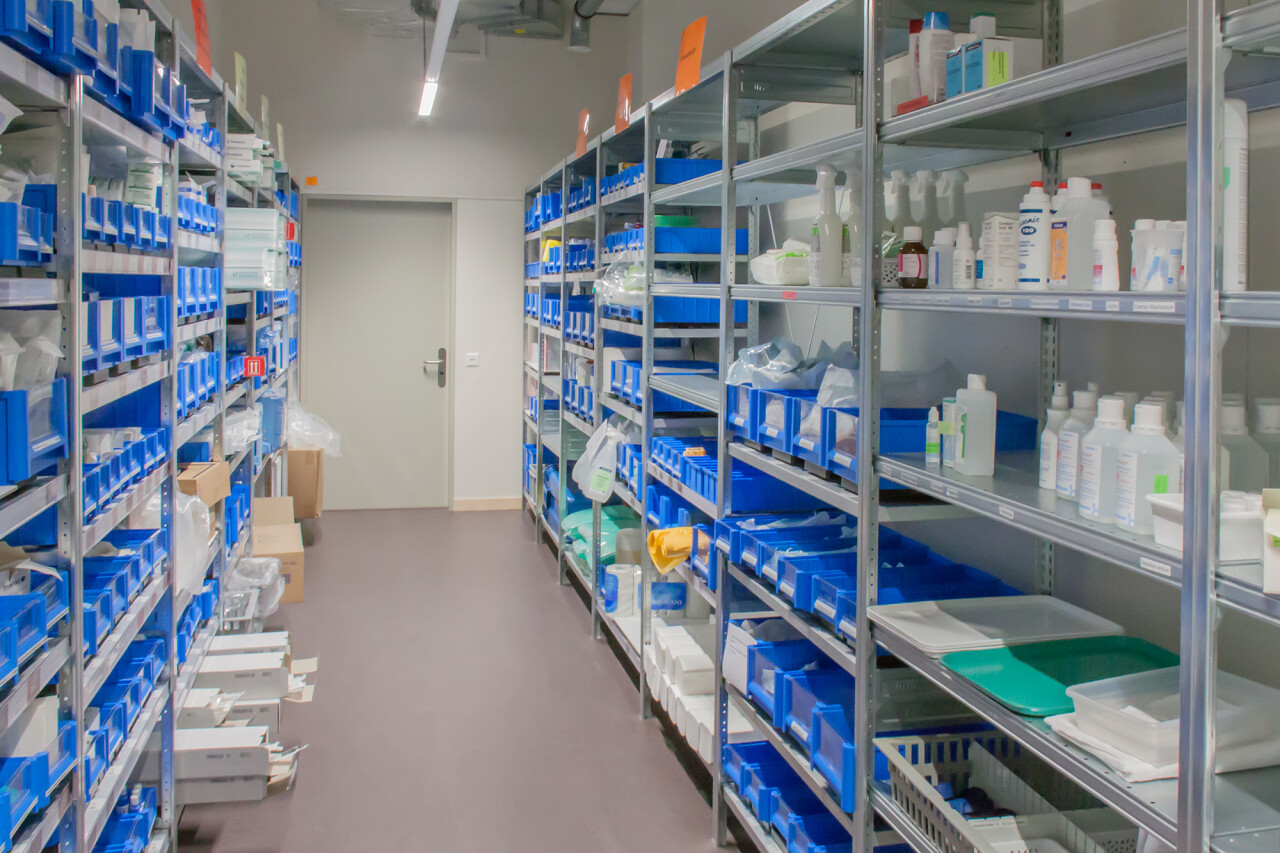Ward Management 2020
THE clinic specializing in paraplegia, spinal, and respiratory medicine for both paraplegic and non-paraplegic patients, located on the shores of Lake Sempach, Lucerne, Switzerland. 1’150 employees manage 150 beds with an occupancy rate of 97%.
Initial Situation
In 2014, ward inventories were managed using a traditional process:
Nursing staff placed orders twice a week using a paper-based process. This involved reviewing stock levels and determining needs independently. Orders were manually entered into the inventory management system, picked by logistics, and then delivered to the wards. After delivery, nursing staff were again responsible for distributing materials and maintaining the storage areas.
- Simple process
- However, prone to errors and placed a heavy workload on nursing staff
Objectives: Logistical tasks should be carried out by logistics
- Extensive automation of the replenishment process
- Seamless, digital ordering process
- Reduction of non-care-related tasks for nursing staff
- Transfer of the process to the logistics department
- Cost savings throughout the entire management process
- Less waste and expiration of materials in the wards
- Emotional relief for nursing staff
Project Progress:
The first discussions with SPZ took place in 2014. This was followed by a test phase, then a pilot installation with a subsequent stabilization phase. After the successful completion of the initial project, an expansion was decided. The system has been and continues to be installed across all ward units in six phases.
In addition to planned transitions between the old and new buildings—sometimes even back and forth—the ERP system was replaced during ongoing operations, and the server infrastructure was brought in-house.
- Step-by-step implementation
- ERP system replacement
- Relocations between wards
Challenges: During the stabilization phase, both organizational and process adjustments were necessary, along with system improvements. This was mainly due to SPZ’s pioneering role in this area. Furthermore, continuous relocations between the wards during ongoing operations required thorough planning and preparation from all sides.
- Necessary organizational adjustments
- Thorough planning as a prerequisite
Key Facts:
Reduction per week and per ward:
- 150 minutes less nursing workload for materials management
- Mental relief for nursing staff
- 1 hour less effort for reordering (logistics and nursing)
- Reduced costs due to expired materials
- Lower stock levels
- Reduction of central warehouse stock due to lower ward inventories
- Stable overall system
Conclusion of the Swiss Paraplegic Centre:
We recommend AutoInventory by Wiegand AG!
From the Procurement Perspective:
- It was worth it – the system meets expectations
- Collaboration with Wiegand was excellent
- Ideas and suggestions were continuously implemented
From the Logistics Perspective:
- Simpler, more efficient: Significant time savings due to fewer process steps and no need for verification
- Improved communication with nursing staff
However:
- Adding replacement items is still time-consuming
- Labeling could still be improved

